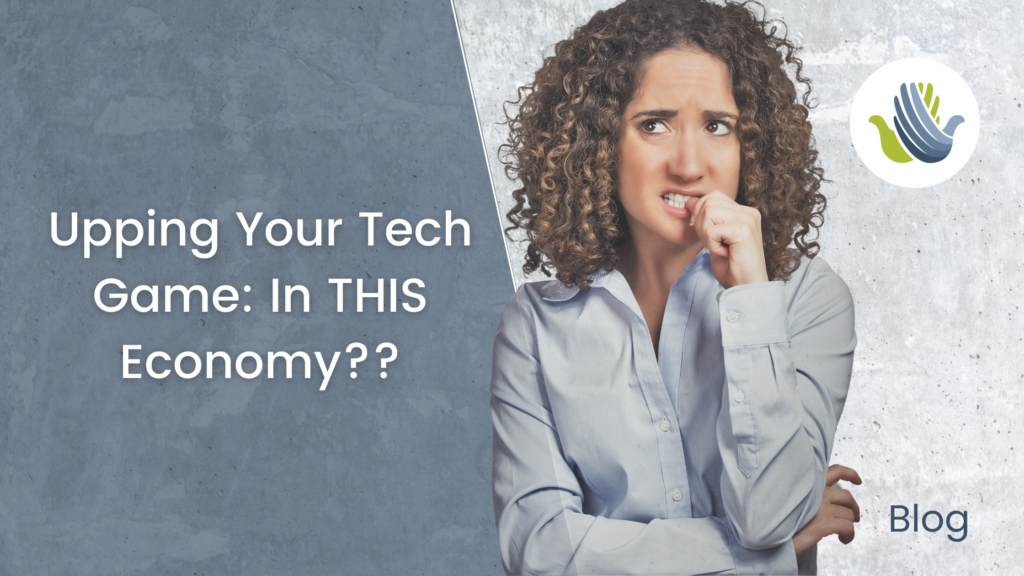I sat down with my family this past weekend to take the NYT Quiz, a weekly tradition in our home because we skew a bit nerdy. Here’s a fun fact. Customs officials are saying they have seen a sharp rise in attempts to bring certain items into the United States. Do you know what they are?
Eggs.
Nothing nefarious or controversial. Just eggs. Look, I get the temptation. I saw a bag of celery at the grocery store for 9 dollars recently. You read that correctly. 9 dollars! Does anyone even like celery? We all know inflation has been a challenge for families who simply want to make some omelets or ants on a log, and this has made me think about you and what your organization may be facing. Perhaps today’s economic situation has been problematic for your organization, and that’s why you aren’t considering a technology upgrade.
But maybe now is the perfect time to reframe how we think about investing in the future.
Brandi Adams, VP of Advancement at Chinese American Service League, and one of Provisio’s long-standing clients, is quoted in Salesforce’s fifth edition of the Nonprofit Trend Report, “Nonprofits often think in terms of scarcity, about what they don’t have versus what they need.”
Investing in Long-Term Transformation
We know that nonprofits like yours have to balance all the good work you want to do with resource constraints. However, as the report goes on to say, a “lean operational mindset can result in decision-making that prioritizes investments in short-term solutions over long-term transformation. In reality, the right technologies should enable nonprofits to be flexible and grow with them as they scale.” Read this article for more information about short-term versus long-term solutions.
Adams goes on to say, “Data isn’t just for reporting. It’s for making the critical decisions that improve the quality of programs and put relationships at the center.” This is a theme we hear over and over again from human services industries: how do we link data with impact?
So many organizations are working from systems that do not integrate with each other. Systems are siloed, so staff does not have a 360-degree view of your clients or patients. Some are even working off of spreadsheets that require manual data entry.
Once you move all your data onto a single platform that integrates with other required systems, you can get a fuller view of the people you serve and the effectiveness of your programs and services. You can start making decisions based on solid evidence.
From a Transactional to Transformational Relationship
Rebecca Creighton, COO of Asian Human Services (AHS) explains, “Data journeys are truly a progression.” AHS faced challenges similar to many of our clients, like siloed Excel spreadsheets, before they implemented Salesforce over six years ago. “In order to move from a transactional organization to a transformational one, we had a lot of work to do,” said Creighton.
Salesforce allows AHS to see a holistic view of an entire household to ensure they are servicing the entire family. As an example, they knew many clients were moving outside of Chicago due to increasing costs of living in the city and that the suburbs could not provide the same resources AHS could. To continue to expand services outside of Chicago, they needed to map their data. They wanted a visual way to identify children who were eligible for programming based on poverty levels.
Tableau allows them to see on a map exactly where families were moving and what services they needed. All AHS’s essential data is stored on a secure server that staff can access to see how each client is progressing based on economic factors, educational progress, and health data. The maps highlight trends and enable AHS to share their impact with funders.
Creighton explains that the ability to turn your data into a visual representation is how you transform your numbers into stories with pictures.
Another client, Safe & Sound, also uses Tableau so they can visualize certain data points, like how many services they provide each year. And, of those services, how many people receiving services are unique individuals? With these data points, Safe & Sound can make programmatic, funding, and recruitment decisions.
“[Provisio has] helped our organization improve immeasurably in our data systems, and allowed us to plan for the future in a way we haven’t before.” Tom Benson, Date and Evaluation Manager
By using data visualizations, Safe & Sound and AHS use real-time data to inform their growth strategy and ensure they expand their services in an informed and data-driven way. Nonprofits using technology and data strategically can make better decisions, demonstrate their impact to stakeholders, and, most importantly, focus on their missions.
And by the way, should you find yourself outside of the United States and see a great deal on eggs, you can’t say I didn’t warn you: failure to declare agricultural items can result in penalties of up to 10,000 dollars. I don’t care how much you love your eggs benedict and souffles. It’s just not worth the risk.
But a technology upgrade? It’s too risky NOT to make that investment. If you would like to learn more about how Provisio can partner with you on this journey, do not hesitate to reach out to us. Understanding that there is never a one-size-fits-all solution, Provisio listens and provides a custom implementation for each client.

Marjorie lives in Saint Louis, Missouri. She received her Master’s degree in English from Truman State University. Her responsibilities at Provisio Partners include content creation and technical writing.

